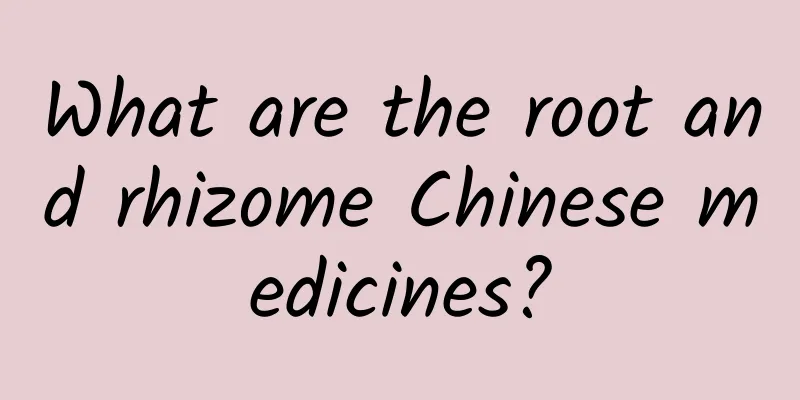The difference between mugwort and wormwood

|
Chinese traditional culture has a long history and is profound and extensive. my country's liquor culture, tea culture, and traditional Chinese medicine culture are all blooming splendidly in the world today. Today I will mainly introduce to you the Chinese medicine culture. Traditional Chinese medicine culture mainly starts with the simplest Chinese medicinal materials. Today I will introduce two simple Chinese medicinal materials to you, which are Artemisia annua and Artemisia argyi. The difference between the appearance of Artemisia argyi and Artemisia argyi Artemisia annua and mugwort are not common in plain areas, they mainly grow on hillsides. Artemisia annua and mugwort mainly grow in wasteland or mountainous areas. Many people are not familiar with them, and these two foods look quite similar. It is not easy to distinguish from the appearance, we can start from the sense of smell. Artemisia and wormwood have different smells. If you see Artemisia and wormwood in the wilderness, you need to know how to distinguish them. Smell these two smells, whichever one is more fragrant is the mugwort. Differences in nutritional content between Artemisia argyi and Artemisia argyi With the development of economy and people's living standards getting higher and higher, Artemisia annua and Artemisia argyi, two basic Chinese medicinal materials, are gradually disappearing in people's daily life. Artemisia and mugwort leave a deep impression on us. March is the growth season of Artemisia, and it is the time when it matures. Artemisia annua is not only a food but also a Chinese medicinal material with miraculous effects. Artemisia not only lowers blood pressure, but also protects the liver. Mugwort is also a magical existence. Our common cough, sore throat and other minor problems can be treated with mugwort. If you vomit blood or have severe bleeding from trauma, you can also use mugwort to treat it. When I was a child, there were a lot of mosquitoes in my home. My family didn’t have money to buy mosquito coils, so we used mugwort to repel mosquitoes, and the effect was very good. The difference between eating white wormwood and mugwort Although Artemisia annua and Artemisia argyi are traditional Chinese medicines, they are also a kind of food. Artemisia annua and mugwort can be simply mixed together and eaten. It is a natural, pollution-free and environmentally friendly product. It is not only delicious, but also has high therapeutic value. Artemisia annua and mugwort are favored by many people as a food. The method of preparing Artemisia annua is very simple. You can pick it from the wasteland and soak it in water to drink immediately when you get home. This method is also very good. There are many ways to cook mugwort, not only in terms of how to eat it, but also in terms of how to use it. Mugwort can be made into sachets to repel mosquitoes, and it can also be used to soak your feet in hot water. I used to soak my feet in mugwort and I thought it was very good. Chinese medicinal materials can help people understand the long history of Chinese medicine culture and also let you know its charm. According to the interpretation, do you understand the difference between Artemisia annua and Artemisia argyi? |
<<: Are mugwort and wormwood the same?
>>: The difference between mugwort and white wormwood
Recommend
Snakes also like to take hot spring baths
In ancient times, the Qinghai-Tibet Plateau was a...
Introduction to the efficacy and effects of Curculigo wine
Curculigo is a traditional Chinese medicine that ...
The difference between Piper melongena and Litsea cubeba
Litsea cubeba and Piper melongena are both fruits...
The effect of the combination of Acanthopanax Cortex
To have a healthy body, we need to take care of t...
Is drinking fruit juice really harmful?
Drinking juice is a very common thing in our dail...
@Spacecraft: Watch out! Earth lightning and space "killer electron rain"
Author: Huang Xianghong Duan Yuechu In recent yea...
The efficacy and function of small pig bristle seven
Herba Pieris is a kind of Chinese herbal medicine...
With a corset, I will have a “slim waist”?
The fairies are very open about their love for be...
The grand sedan chair in "Ning An Ru Meng" is carried by eight people! The secrets of the "luxury cars" of ancient nobles are revealed
Fan-shot stills of the drama "Ning An Ru Men...
A major breakthrough in Xia culture archaeology! The new discovery is most likely the Erlitou "city wall"
Xinhua News Agency, Zhengzhou, December 26 (Repor...
Many people know about the "West-East Gas Transmission Project", but this time it is the "West-East Hydrogen Transmission Project"
Jiang Yue On July 3, the survey and design of the...
Qingming Outing Season | Want to go outing and learn knowledge during the Qingming holiday? Why not go see the "Kidney of the Earth"?
Audit expert: Yang Yanhui Senior Landscape Engine...
Attention! Orange warning for high temperature + yellow warning for heavy rain! These provinces and cities should beware of secondary disasters
Central Meteorological Observatory June 18, 06:00...
A Brief History of China's Observatories | Why did ancient civilizations always like to look up at the sky?
Archaeology is often a job of digging deep into t...
The efficacy and function of Xanthium sibiricum
There are so many medicinal herbs in the world, a...









